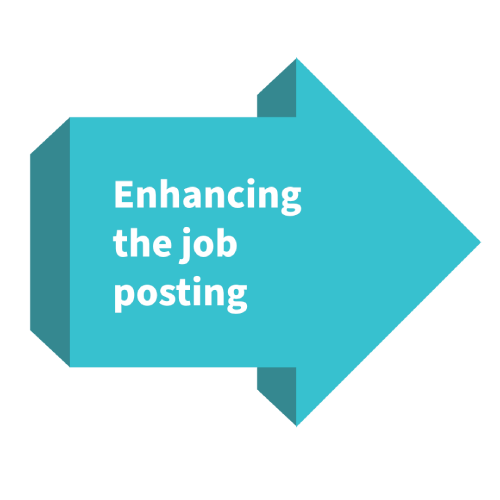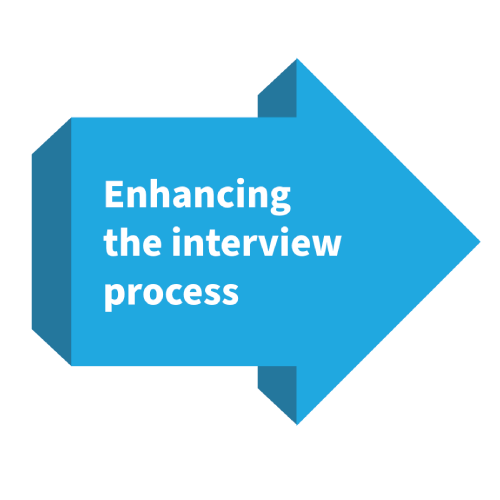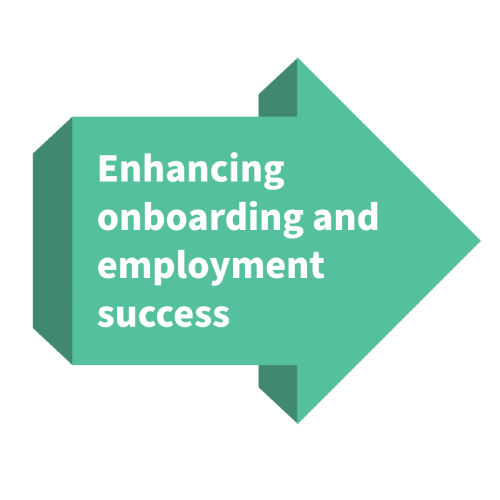The content below illustrates some ways we have found managers can be more inclusive and make their organization more neurodiverse friendly.
“The world needs different kinds of minds to work together.” - Temple Grandin
“When considering hiring neurodiverse people, employers should first ensure job descriptions use inclusive language, making it clear that the organization welcomes neurodiversity. They should also aim to make distinctions in job descriptions between what is “required” and what is “preferred” or “nice-to-have.” Many organizations currently use a “more is better” approach to developing their job descriptions. In an effort to easily eliminate unqualified job candidates, they often provide detailed job descriptions with “requirements” that could inadvertently deter qualified neurodiverse candidates from applying.
Similarly, some companies’ job descriptions include very general skill requirements that can be applied in multiple settings, such as “strong communication skills” or “ability to work in a team environment.” Descriptions like these can make some neurodiverse individuals, like those with dyslexia or autism, apprehensive about applying. If something is not an essential function to accomplish the job, employers should make this clear or not include it.” - The Employer Assistance and Resource Network on Disability Inclusion (EARN)
For more help crafting job descriptions, please see these guidelines under job descriptions.
Here is an example of how a job description was adapted to be more inclusive to neurodivergent individuals.
Job Post Format
We want job seekers to know that we are committed to providing opportunities where individuals with diverse backgrounds can collaborate, grow, and excel across different functions and disciplines. For this reason, we recommend the following structure for job posts at Stanford:
BEGIN
Stanford University is home to the most dynamic, innovative, and collaborative IT community in Silicon Valley and across higher education. Our shared purpose is to attract and develop the top IT talent by providing an extraordinary work environment that celebrates the diversity of background, thought, and experience of our people. We deliver human-centric information and support services that power Stanford’s unparalleled learning, research, and healthcare mission.
[insert job description]
IDEAL is Inclusion, Diversity, Equity, and Access in a Learning Environment.
The future is diverse. IDEAL is the future of Stanford.
The future is diverse and you are our future.
Higher education has the mission to advance human welfare in a rapidly changing world. Institutions that are truly inclusive and embrace and advance diversity everywhere – in every program, every school, and every area of operation – will be the most successful. Stanford must become one of those institutions!
Learn more about Stanford’s IDEAL initiatives: https://ideal.stanford.edu/
Learn more about IDEAL in IT at Stanford: https://itcommunity.stanford.edu/programs/ideal-it
[insert standard equal opportunity statement]
One of our favorite bulleted list of recommendations is published by Robokind in their article “7 Ways To Welcome Neurodiverse Candidates”.
- Remove Barriers from your Job and Application Process
- Make it clear that your company welcomes neurodiverse candidates.
- Be aware of and understand your expectations for each applicant.
- Let the candidate know what to expect.
- Consider offering alternative interview formats*
- Ask direct, literal questions. Expect literal answers.
- Do not be afraid of making the interview a multi-day process.
*The Neurodiversity in IT Program asks candidates to demonstrate their skills via a coding (or other) prework exercise, like this one, that was used to screen candidates for a QA role.
Neurodiversity Hub’s Tips for Exhibitors presents more great tips on how to ensure a successful interview:
- Reduce sensory stimulation.
- Ask about a candidate’s interests!
- Don’t worry about eye contact.
- Speak clearly and concisely.
- Be patient.
- Listen.
- Be open.
*Stanford leverages job coaching through Neurodiversity Pathways.




